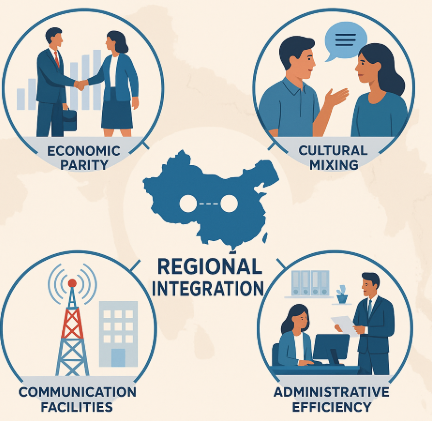“Where there is economic parity, cultural mixing, communication facilities and administrative efficiency, it will be easy and natural for two or more adjoining [socio-economic] units to cooperate, because they will have attained a high degree of socio-economic uniformity. In such cases they should merge to form a single larger unit. This will further the welfare of their respective citizens and enhance their socio-economic interests.” – P R Sarkar (October 1979, Calcutta)
This statement underscores a foundational principle in the study of regionalism in the global political economy: that structural compatibility among neighbouring units, such as economic parity, shared culture, communicative infrastructure, and administrative alignment, creates fertile ground for regional cooperation or integration. In global political economy, regionalism refers not merely to geographic proximity, but to politically coordinated economic integration, where states (i.e. the legal form of a country) form institutions, agreements, or blocs to advance mutual development, trade, and security goals (including human security generally).
Economic Parity and Convergence
When adjacent countries share similar levels of economic development, their domestic industries are less likely to be threatened by each other’s competitive advantages. This reduces asymmetries that typically complicate negotiations, enabling harmonization of fiscal, trade, and labour policies. For example, the European Union advanced most effectively among its core economies (Germany, France, Benelux) due to this parity. In contrast, North–South divides in other regions (e.g. MERCOSUR or ASEAN) often slow down deeper integration due to disparities in infrastructure, governance capacity, or income.
Cultural Mixing and Shared Identity
A degree of cultural affinity or intermingling—including common language, religion, or historical experience—can reduce the transaction costs of cooperation and facilitate the formation of a shared regional identity. This identity supports legitimacy for regional institutions and fosters trust. For example, ASEAN’s “Asian values” discourse and shared post-colonial histories have helped maintain cohesion despite political differences. Similarly, in West Africa, the shared use of French or Portuguese and similar legal systems underpins ECOWAS’ efforts at economic and political integration.
Communication Facilities and Infrastructure
Efficient transportation, digital connectivity, and energy linkages enable market integration and cross-border flows of people, goods, and ideas. Without physical and digital infrastructure, even the most ambitious regional agreements remain symbolic. For instance, East African countries benefit from joint railway and customs corridor development, facilitating trade under the East African Community (EAC). The absence of such connectivity can fragment regions and delay the operationalization of trade pacts.
Administrative Efficiency and Institutional Compatibility
Countries with comparable bureaucratic competence and governance models find it easier to align policies and standards, implement shared regulatory frameworks, and engage in joint institutional development. EU institutions, for example, function well where national governments have strong administrative capacity. In contrast, regionalism in South Asia (e.g. SAARC) has been hindered by divergent administrative systems and mutual distrust.
Merging or Deep Integration as the Logical Outcome
When the above factors align, regional integration becomes not just feasible, but optimal. The integration of economies, polities, or regulatory systems into a larger, cohesive unit can:
- Enhance bargaining power globally,
- Create economies of scale,
- Protect against external shocks, and
- Improve welfare and socio-economic outcomes for citizens.
Examples include the Schengen Area in Europe, which allows free movement, or the African Continental Free Trade Area (AfCFTA), which aims to harmonize trade and investment regulations across diverse yet increasingly connected African states.
Conclusion
Sarkar’s statement aligns closely with theories of functional and institutional regionalism, which argue that where structural convergence and mutual benefit exist, regional cooperation is not only rational but likely to succeed. In the global political economy, such cooperation reflects a strategic adaptation to the process of increasing interconnectedness and interdependence among countries through the cross-border flow of goods, services, capital, people, and ideas. Interdependence does not mean lack of independence (though always some degree of sovereignty has to be given up). Interdependence expands access to markets, technology, cultural exchange, fostering economic growth and regional or global collaboration. This allows countries (or more formally states) to collectively assert influence, mitigate vulnerabilities, and foster inclusive development across borders.
